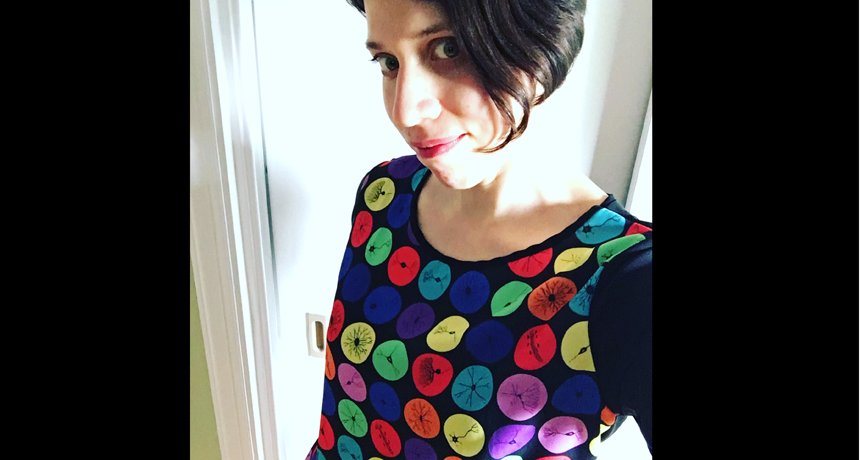What does a scientist look like? You!
Science News for Students is seeking images, audio and video of women in science for our upcoming feature

This is what a scientist looks like! Here I am in one of my favorite shirts, covered in drawings of brain cells.
B. Brookshire/SSP







